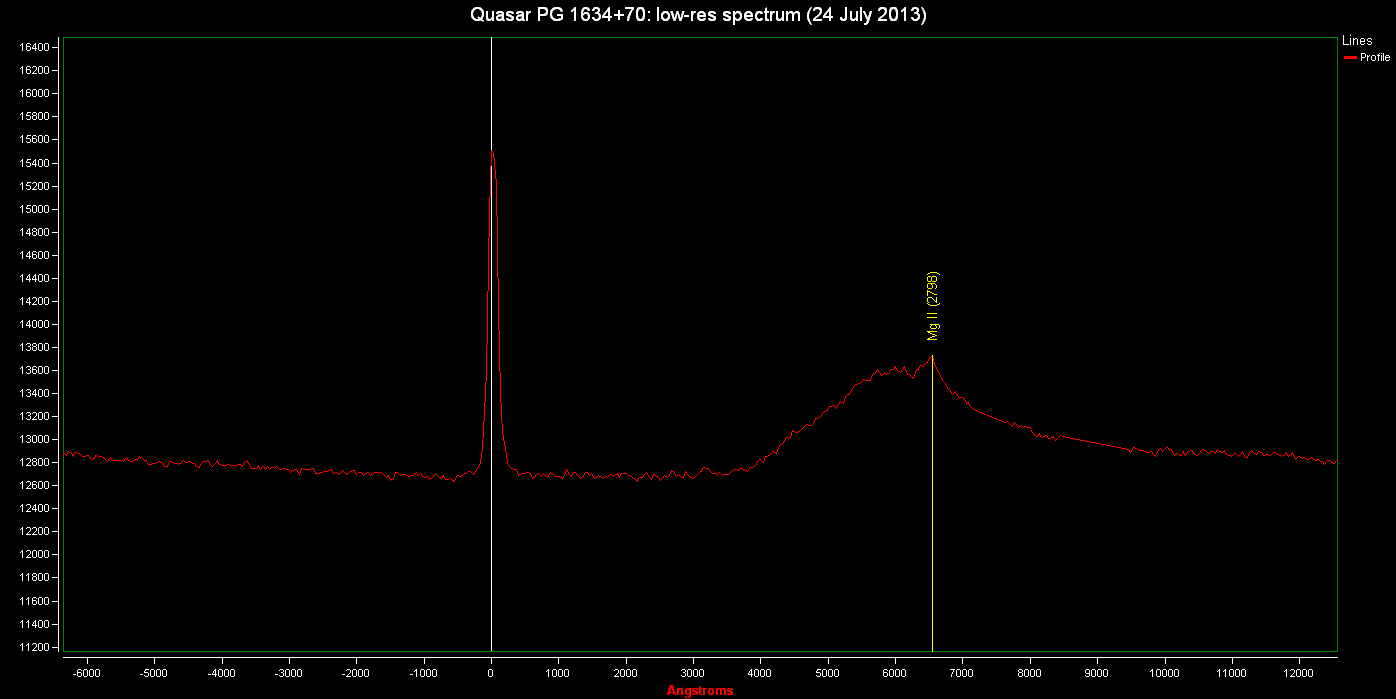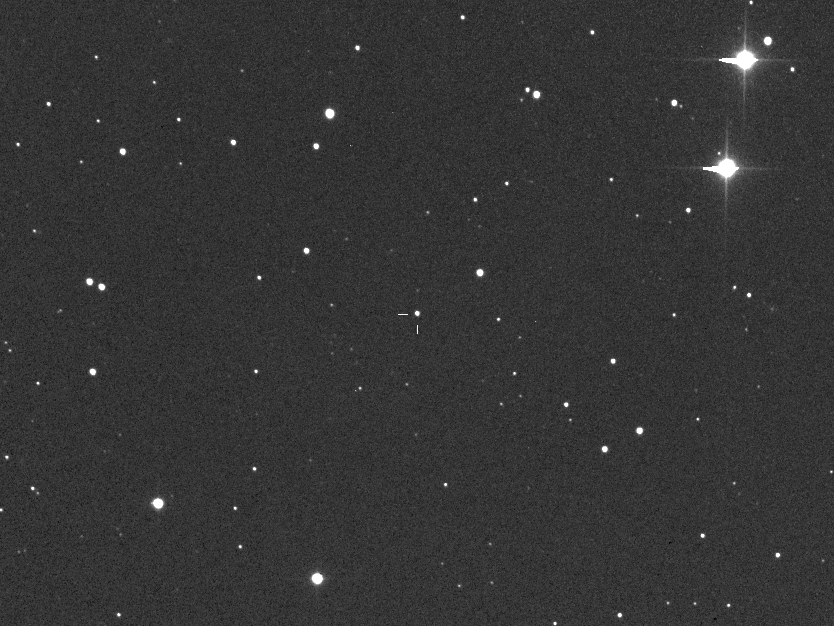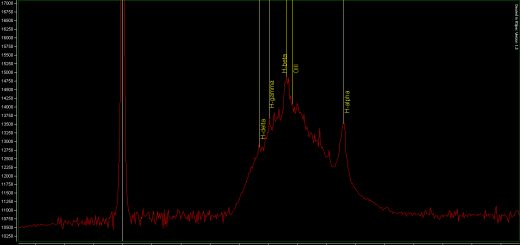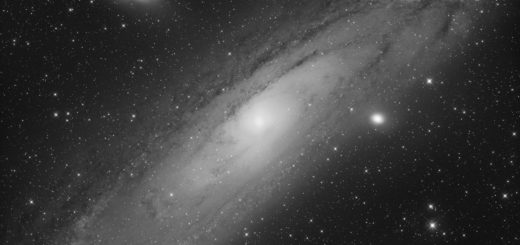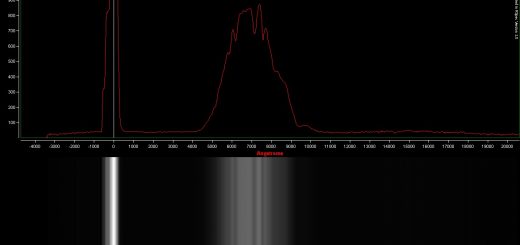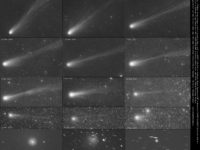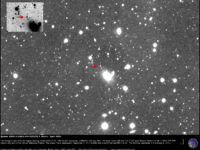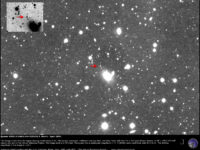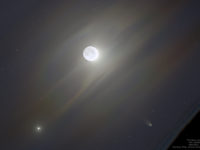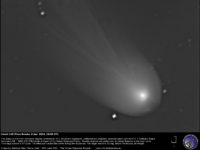Quasar PG 1634+706: spectrum and redshift
On 24 July 2013, the Celestron 14″ robotic unit was slewed to a very distant source, quasar PG 1634+706 with the goal to grab a spectrum and measure the redshift of this astrophysical source.
This quasar shines at mag 14.7, so it is easily feasible with our spectroscopic unit. While there was a bright Moon rising, the signal was still good for reduction. The spectrum was analyzed with RSpec and the output is plotted above.
The most evident feature is the emission from the Mg II: in the spectrum it peaks at about 6530 angstrom, while the wavelength at rest is 2798 angstrom. From here, the redshift Z can be easily calculated as:
Z=(Lobs-Lemi)/Lemi, where Lobs and Lemi are the observed and emitted wavelengths, respectively.
Introducing the numbers above, one retrieves Z = 1.33. This value is in excellent agreement with the red-shift z=1.334 in the NASA/IPAC Extragalactic database. From that redshift, a distance of about 9 billions of light years can be inferred.
Above is an optical image of the Quasar, taken with the PlaneWave 17″ robotic unit while the other scope was capturing the spectroscopic data..
Support The Virtual Telescope Project!
Support us! Please, donate and receive unique, LIMITED EDITION set of images of the stunning comet 12P/Pons-Brooks with Andromeda Galaxy, of potentially hazardous asteroids, space stations and much more, specifically made for supporters like you!
(you can adjust the amount later)

